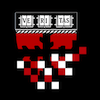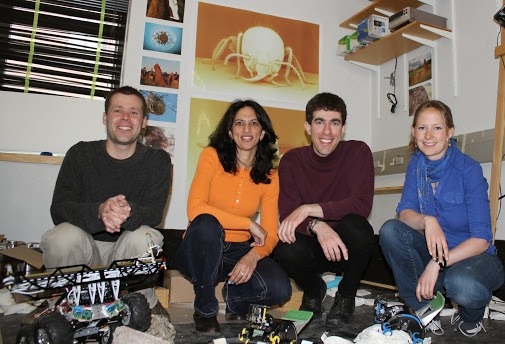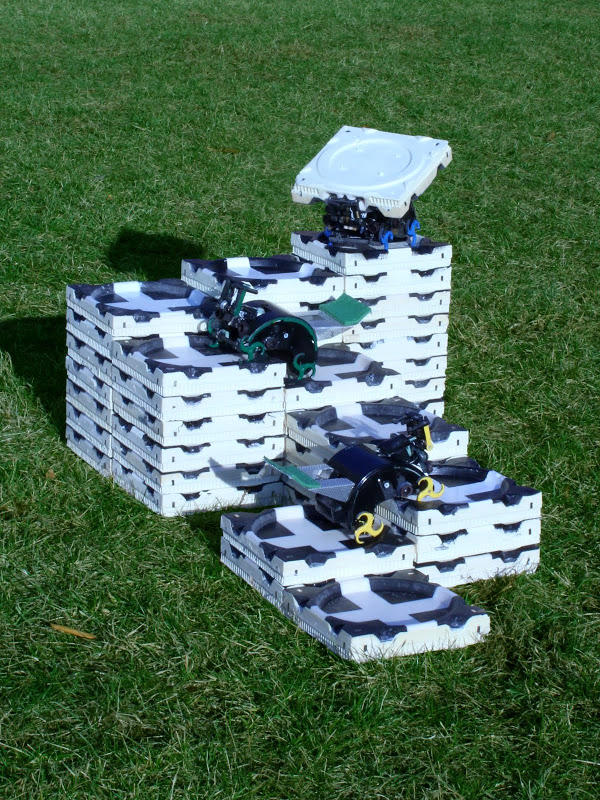Collective Construction of 3D Structures by Robots of Many Kinds!
Termite mounds can be towering, complex structures on the scale of several meters,with complicated functional architectures that include features such as ventilation systems and humidity regulation. The architects are vast numbers of simple insects on the scale of millimeters, working with no centralized control or preplanning. Yet these animals achieve tremendous complexity, parallelism and robustness, from individuals that are small, simple, and expendable. How swarms of social insects build the structures they do is a fascinating topic not fully understood. Engineering offers a complementary problem: How could you program an artificial robotic swarm to build a particular structure?
Our group studies how this can be achieved. We combine ideas from swarm intelligence and programmable self-assembly, to create algorithms, theory, and robot designs.
- We have developed a Family of Decentralized Algorithms by which simple robots -- without wireless communication or GPS/localization -- can cooperate to build a large classes of user-specified structures by sensing and modifying their environment like termites (bio-inspired "stigmergy" coordination) (e.g. ICRA 2006, IJRR 2008, DARS 2012).
- We have also developed many Robotic Platforms, for example, block-carrying climbing robots that can build modular block structures much larger than themselves (Science 2014, cover article), and soft-material-depositing robots that can build in unstructured environments (ICRA 2014).
- Most recently, we are collaborating with biologists to study and model the mound-building termites in Namibia (see Biological collectives page for recent publications).
Collective construction has many important potential civilian applications, from the construction of human habitats to containments or support structures in disaster areas. It also is a difficult challenge for robotics and poses many interesting challenges in mechanical design, manipulation, autonomy, and multi-robot coordination. Biological builders, from termites to beavers, have many lessons for roboticists.

PEOPLE: Kirstin Petersen (now faculty@Cornell), Nils Napp (now faculty@Cornell), Justin Werfel (now Research Scientist @ Wyss), Radhika Nagpal and many great undergrads and collaborators.
PRESS AND MEDIA
Movies: Collective Construction YouTube Channel
The Termes Robots are on the cover of Science
Termite-inspired Robots, Cover Article, SCIENCE, Feb 2014
with Perspective by Prof. Korb
and in Science Top 10 breakthroughs for 2014
Lots of great media coverage!
Science Press Release, Wyss/Harvard Press Release
Boston Globe Article, BBC News article,
Gazette, National Geographic, Discover Magazine
Videos/Podcasts
National Geographic Video
NPR "All Things Considered", This is Genius Video (ITN UK) , Reuters TV Interview
MUSEUM EXHIBIT!
London Science Museum (2014), New Zealand Science Museum (2017)













